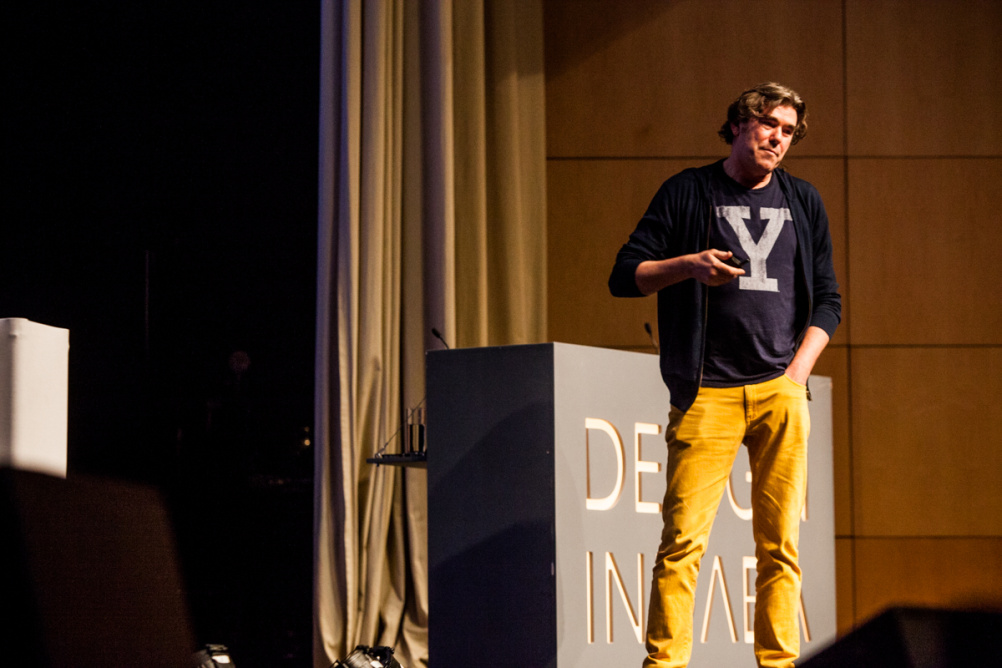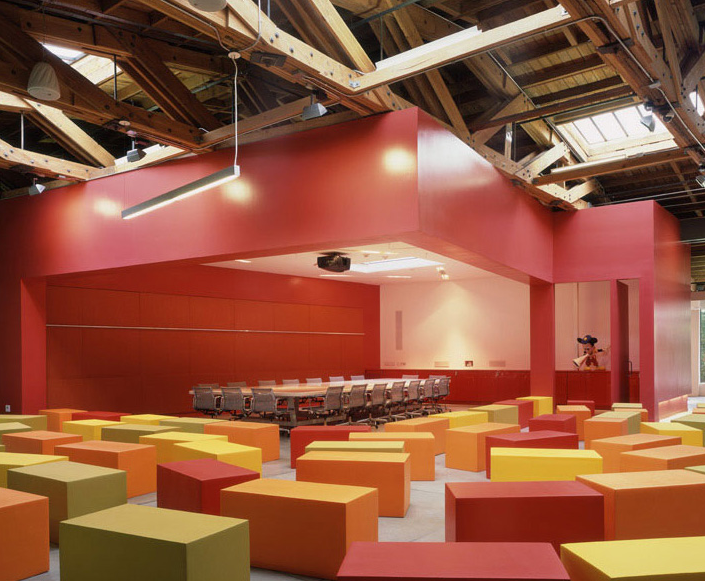Clive Wilkinson on ‘the social agenda of buildings’

Clive Wilkinson has carved out a niche as one of the world’s leading workspace designers by applying urban design thinking to interior design.
His practice Clive Wilkinson Architects cut its teeth designing the offices of advertising agencies in the early ’90s. Since then he’s designed Google’s Silicon Valley headquarters in California, Nokia’s Finland Headquarters, and the Disney Store headquarters in California, among many other workspaces around the world.
We caught up with him at Design Indaba where he was talking about ‘the social agenda of buildings’ and the need to see any organisation as ‘a human community’ by ‘making villages in buildings’ which communicate with each other.

Design Week: How did workspace design become a specialism; was it an area that found you or did you seek out these kind of jobs?
Clive Wilkinson: ‘It was when I worked with Frank Gehry in 1990 on the offices of Chiat/Day the ad agency. It was an extraordinary powerhouse of ad agency creative culture – they were the people who came up with the 1984 apple ad. The project taught me about creative space and having sensitivity to the environment. These people who worked there live and die by their ideas. Lots of architects seem to be able to do very well by thinking without originality – thank God that doesn’t happen in ad agencies. We were working on the top floor space of the Chiat/Day office. It’s where I did my first weird table. It was made by fusing surfboards together to make one surface in the board room.

DW: Does it take a particular type of client to embrace your way of thinking?
CW: I think Marcello Serpa said earlier [at Design Indaba], ‘Always work for someone who’s better than you’ and I think that’s something I look for in clients. I need to be able to establish what works and doesn’t work, and think about organics issues and how the workspace functions as an ecological organism. I look at the pulse of a building throughout the day and work out how to build empathetic systems into the ecology of the human community that is the workplace. Any design needs to better the community. We’re looking at synergistic energies between departments and often they’re improved by removing barriers. Over our career we’ve created astonishingly few private offices – not more than 30. Even the head of Nokia sits at an open desk.

DW: You design to meet worker’s needs and that often means changing flow and systems. Do you also look to change the way people work if it can benefit their business?
CW: Maybe if they’ve become particularly desk-bound. It’s about realising human potential and making sure everyone is engaged and effective.
DW: Do you get a chance to measure or witness the effectiveness of your projects then?
CW: I’ve seen the TBWAChiatDay project we did in 1998 about 15 years on and they’re still happy and buzzing around and there’s no mess on their desks…There’s only one project in our history which didn’t work out as planned but that was when we were forced by the client to build closed offices.

DW: What do you think the demands of the future workspace will be?
CW: There has already been a slight reaction against the open workspace but in spite of this I don’t see it changing one iota. Companies see the benefits of knowledge-sharing. Of course there’s the lack of privacy issue but you can create areas for privacy and concentration by having higher proportions of small quiet spaces and phone booths.
DW: In your presentation you talked about the changing use of workspaces and how in your work you ‘make villages in buildings.’ Maybe you can run over some of your key messages.
CW: I’m trying to return us to an older way of life where everything is accessible on foot and there is a sense of variety and character and distinction. Recently someone sketched out Samuel Pepys’s life in about 1670, showing where he went – tracing his footsteps around the city of London, and straight away you get a sense of variety. Today office buildings are separated and modern developments have forgotten to engage people. There’s been an apartheid of architecture over the last 100 years, but within any building we still have the opportunity to create meaningful destinations.
-
Post a comment




